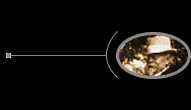


 |
  |
|
![[Cover Image]](Thumbs/WER2002-01.gif)
IntroductionOCTOBER 8, 1971, marks the centennial of the two greatest natural catastrophes in the history of the Middle West. Ironically, both happened not only on the same day but almost at the same hour; both had been preceded by ample but disregarded omens; and both stemmed from the same fundamental causes--wood rendered tinder-dry by prolonged drought, plus the factor of human carelessness. In Chicago, a lantern thoughtlessly placed within kicking distance of a cow in a barn on De Koven Street is reputed to have set off the most destructive metropolitan blaze in the nation's history, resulting in a property damage of $200,000,000 and virtually annihilating the city's core. In northeastern Wisconsin, fires set by hunters, Indians, lumberjacks, railroad workers, and farmers burning stumps and rubble culminated in the nation's worst forest fire, in terms of lives lost. Although the Wisconsin fire ravaged 2,400 square miles and destroyed numerous settlements and isolated farms on both sides of Green Bay, it has gone down in history as the Peshtigo fire, because it was in this village and in the farming area immediately surrounding it that industry and population were the most concentrated, that the fire reached its greatest virulence, and that the majority of the fatalities occurred. In the fall of 1871, like other localities to which the expanding railroads were bringing an undreamed prosperity, Peshtigo, on the river of the same name in Marinette County, was exploiting the surrounding forest lands to the fullest advantage. William G. Ogden, the Chicago millionaire, had invested heavily in what was then the country's largest wooden-ware factory to convert the river-borne logs into such articles as pails, tubs, broom handles, barrel covers, and clothespins. There was also a sawmill, a sash, door, and blind factory, a foundry and blacksmith shop, stores, hotels, a boarding house, and, to the villagers' considerable pride, a schoolhouse, and a Protestant as well as a Catholic church. All this was as of the early evening of October 8, when the village's official population of 1,700 was swollen by an influx of recently arrived laborers to work on the railroad right-of-way, in addition to the usual number of salesmen, travelers, and visitors to be found in any similar village. By daylight less than 1,000 of this number were still alive, and only one structure, a partially constructed house, remained standing. The occurrences of that dreadful night have never been accorded their proper place in the history of American disasters, primarily because Chicago's ordeal was by its very nature more spectacular, more universally publicized, and more often revived in print. Peshtigo's chief historians have been two journalists and a novelist, Frank Tilton--a Green Bay newspaperman who in 1871 put together a book of eyewitness accounts and his own reportage to sell for the benefit of the survivors--Robert W. Wells of the Milwaukee Journal, who in 1968 gave the Peshtigo story a skillful and readable reconstruction, and William F. Steuber, Jr., who in 1957 used the tragedy as the basis for a prize-winning novel. But no writer has yet to equal in vividness, imagery, or sheer drama the contemporary account written by Father Pernin, the parish priest for Peshtigo and nearby Marinette, whose churches both burned to the ground. Published in Montreal in 1874, ostensibly to raise funds for a new church in Marinette, Father Pernin's account may have also been an attempt to exorcise the memories of that October night during which he suffered fearfully while behaving heroically. Not a great deal is known about Father Peter Pernin except that he was born in France about 1825, and served parishes in L'Erable and Clifton in Illinois from 1865 to 1869. He was parish priest in Oconto in 1870 and in Marinette from 1871-1874. From 1876-1878 he was at Grand Rapids (Wisconsin Rapids), and in 1879 he was at LaCrescent, Minnesota, in which state he continued to serve a number of parishes, the last recorded one being in 1898 when he was at St. Joseph's Church in Rushford, Diocese of Winona. In 1918-1919 Joseph Schafer serialized parts of Father Pernin's account in the Wisconsin Magazine of History (Vol. 2). In reprinting it during this centennial year we have added some material which Mr. Schafer omitted and have supplied footnotes wherever they seemed necessary to further clarify the events being described. W.C.H.
|
EDITOR'S NOTE: Full bibliographical information about the works on the Peshtigo fire mentioned above is: Frank Tilton, Sketch of the Great Fires in Wisconsin at Peshtigo, the Sugar Bush, Menekaune, Williamsonville, and Generally on the Shores of Green Bay; with Thrilling and Truthful Incidents by Eye Witnesses (Green Bay, 1871); Robert W. Wells, Fire at Peshtigo (Prentice-Hall, Inc., Englewood Cliffs, New Jersey, 1968); William F. Steuber, Jr., The Landlooker (Bobbs-Merrill, Indianapolis, 1957); and The Finger of God Is There!, or Thrilling Episode of a Strange Event Related by an Eye-Witness, Rev. P. Pernin, United States Missionary, Published with the Approbation of His Lordship the Bishop of Montreal (Montreal, 1874). Wells' book contains a useful summary of sources, especially of newspapers consulted. Strangely, no writer on the subject seems to have consulted the valuable material contained in the appendices to the Wisconsin Assembly Journal, 1873.